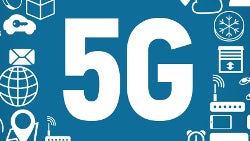The 5G hype: analyst dubs its indoor penetration 'terminally poor'

Moving from the current established 4G LTE standard networks to the lauded 5G that Verizon, AT&T and T-Mobile all rushed to demo this year, won't be like moving to the previous "G" steps, it seems. According to senior analyst Andrew Entwistle, the 5G technology has a laundry list of disadvantages, compared to just perfecting the current 4G LTE rollout.
First in line is the "perhaps terminally poor outdoor-to-indoor service" that 5G commands. Not only does the higher-frequency 5G spectrum have much shorter outdoor span compared to 4G, which would force carriers to build a denser tower network, but it is also weaker at penetrating buildings, which means numerous femtocells have to be rolled out on user premises.
At that point, carriers might just decide that it is not economically viable to move to the untested and uninhabited desert of 5G frequencies, but rather strive to improve their current 4G networks. Still, 5G promises faster speeds (duh), and, more importantly, those will be available to each compatible phone in the line of sight, subject to the limits of tower capacity, instead of being distributed in a way so everyone has an equally poor connection at crowded events, like it is now.
That is why the analyst envisages that Verizon, AT&T and the rest, will continue developing their 5G efforts, but only as supplemental services to their existing 4G networks - for those willing to pay the price on much faster, dedicated data lines that are worth installing extra equipment for. According to estimates, eventual widepsread adoption of 5G is still up to 5 years away, which is somewhat of a relief - just imagine how fast would you blow through your data caps streaming a 4K TV series binge on Netflix in 2020.
source: SMH












Things that are NOT allowed: